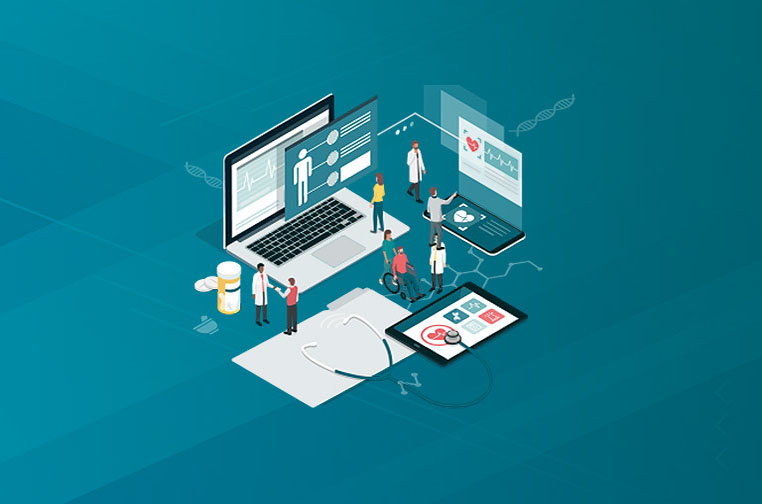
WHAT IS EHR INTEROPERABILITY?
EHR interoperability is the ability to effectively communicate health information electronically. Basically, transfer data properly, without information missing. There are two fundamental components of this. The first one is the ability to securely transport the data and the second one is the ability to interpret and use that data. This means the data isn’t leaked or easily obtainable, which would be a HIPAA violation, and when the data does get to the intended recipient, it needs to be complete, because providing care with partial data is dangerous. This is why Stage 2 Meaningful Use has set requirements that help move Health IT towards interoperability.
Who oversees all of this? The mechanism for standardizing the transportation component of interoperability, is the Direct Project under the Office of National Coordinators (ONC) Standards and Interoperability. This new specification will become the new “fax machine” that will carry the information to its recipient. The Consolidated Clinical Document Architecture (CCDA) will standardize the structure of the clinical summary.
What you need to understand is the importance of interoperability to you. As a member of the healthcare ecosystem, you know that there are several possible reasons for sharing a patient’s healthcare information between various providers. For instance, a patient may need to see a specialist at a different practice; they may have test results sent from a lab; they may have a medical emergency requiring a trip to the ER. All of these are situations where interoperability is important. Interoperability will allow care facilities and providers to share the patient’s records in real time, without compromising patient security or privacy. It allows for patients to receive the best care possible, from multiple providers, no matter where they are. Providers, patients and insurers all benefit from increased access to the patient’s medical information.
Interoperability is usually an afterthought when selecting an EHR, even though it should be in the forefront of the provider or practice manager’s checklist of requirements for an EHR system. EHR interoperability is an essential part of the government’s Meaningful Use Stage 2 requirements. Meaningful Use Stage 2 is what affects Medicare payouts for health care providers. According to the guidelines, there will be reduced payouts to all providers that take Medicare and do not follow the guidelines.
PROVIDER BENEFITS
Interoperability isn’t just important because of the impact it has on revenue, it is also important because of its impact on providers. When using an EHR software with interoperability, a provider can receive the patient’s data in real time. This allows the physician to make informed decisions about the patient’s health without waiting on paper records, faxed/scanned information or requiring security clearance on other providers’ systems.
The information is available immediately in a searchable form that eliminates hunting through complex charts or deciphering illegible handwriting. This reduces the risk of malpractice lawsuits that stem from misreading data and it reduces the chance of a wrong diagnosis from the physicians not having the information they need.
PATIENT BENEFITS
Interoperability also allows the patient to have their own agency and be informed at all times. It allows a patient’s medical records to follow them throughout their healthcare process, even if they chose to switch providers. Patients benefit from this increased access to their medical records and having faster and easier access to new care, since there won’t be the need for a repeat of testing, looking for symptoms, etc. They are also kept up to date at all times. A patient could visit the doctor, submit samples for testing and then view the test results on their computer or mobile device, all in the same day.
This speedy transfer of information has a real impact on the patient’s health, as many conditions require immediate intervention to save the patient’s life or minimize long-term damage to their health. For instance, if a patient has a stroke or heart attack in the middle of the night, the physicians on shift at the emergency room would need to have instant access to the relevant data in the patient’s medical records, such as their list of medications, allergies and other important information.
After all, providing care is the most important thing and priority to anyone involved in the healthcare ecosystem.
COST BENEFITS
Along with care, cash is also important when it comes to providing care. While there is no set amount on how much revenue EHR adoption and EHR interoperability will help bring in, common sense would suggest that it would be a significant amount. The primary revenue increase would come from cost savings, as it will reduce malpractice lawsuits. It would also increase revenue, since providers would be able to provide quicker and more effective patient care, since there would be an elimination of redundant or inapplicable testing and unnecessary procedures, which would allow for more patients to get care.
In the past, some health care providers viewed patient data as their property, unable or unwilling to share data with other providers outside their organizations. Today these barriers are coming down and that is a good thing. Look at the paragraph above, see what the simple message to get from it is.
EHR interoperability helps patients by providing the best care; it helps providers/practices by reducing their overhead costs, letting them take care of more patients and increasing revenue.